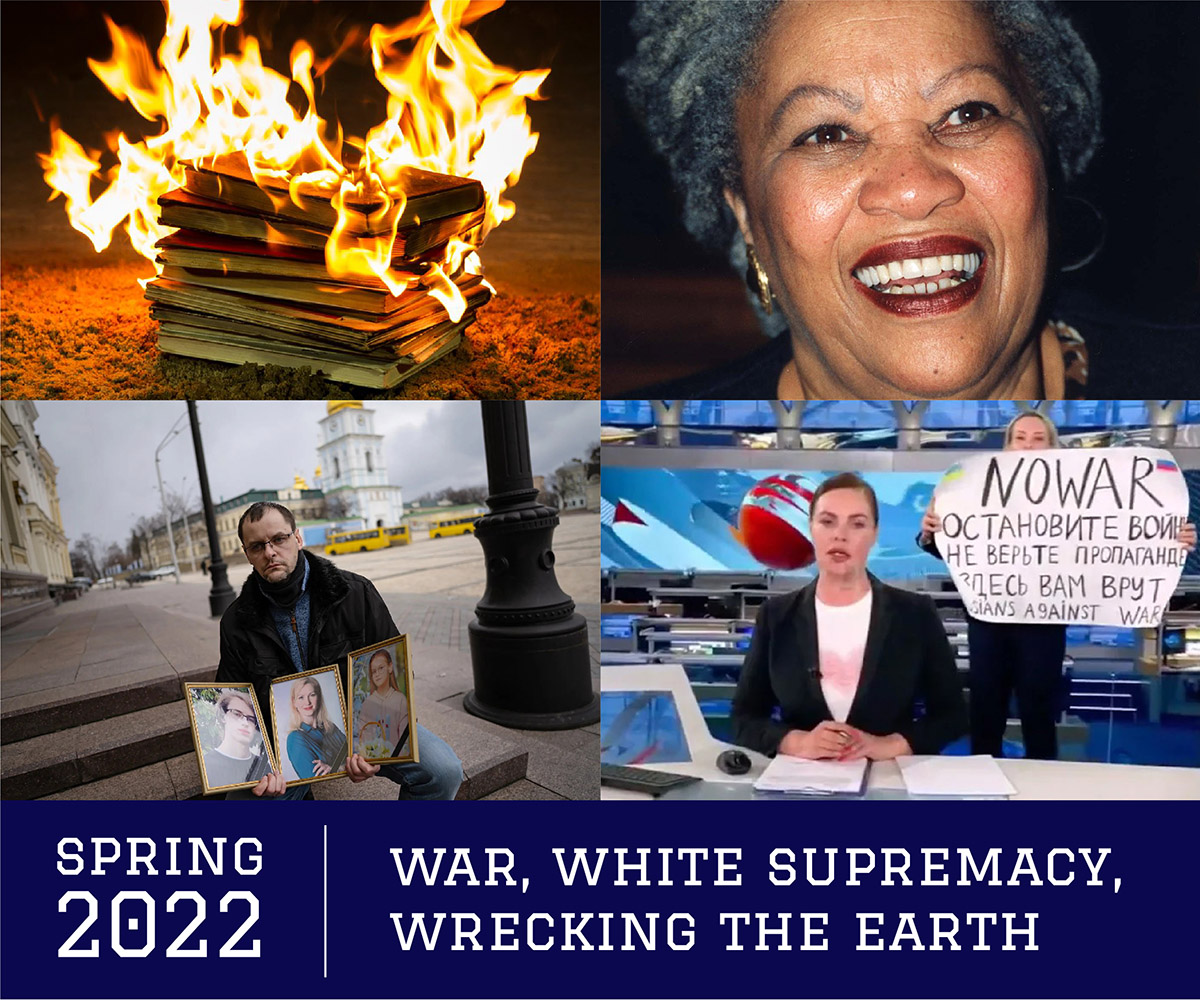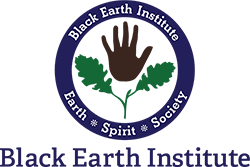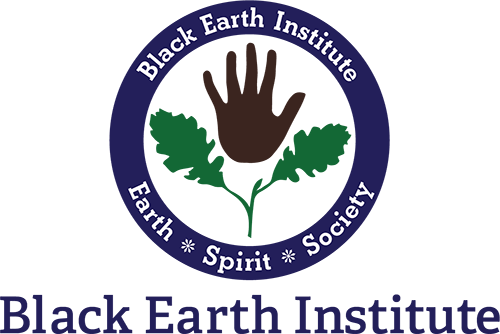
Photo credits, clockwise from upper left: Time Magazine, Wikipedia, CBC, The Boston Globe
by PETRA KUPPERS
(a blog entry adapted from Petra Kuppers: Eco Soma: Pain and Joy in Speculative Performance Encounters, University of Minnesota Press, 2022, full open access text available here: https://manifold.umn.edu/projects/eco-soma)
What is “eco soma”? I approach this phrase as a mash-up, an encounter zone all by itself: there is “ecosomatics,” a term somewhere between exclusion and inclusion, with undertones of neoliberal self-care, of White settler appropriation of Indigenous practices, a bit New Agey, a bit old ritual. And there is “eco soma:” a two step, a longer phrase, a stumble, the hesitation marks left in. The break holds hope and promise.
My current writing collects my experiences of embodied performance witnessing. It attempts to figure out those special moments when time shifts, or new sensations emerge, in the middle of involved witnessing, in the encounter zones between self and environment and on specific lands.
Eco soma sensing connects with materials, objects, and sites that one’s moving body meets. I find that sometimes my moving self, in dancerly openness, can sense more or differently than when I am immobile, even though (or maybe because) my disabled movement is painful. Eco soma sensing is interested in the kind of gaps and opportunities that open up when an awareness of being in the world encounters uncomfortable spaces. That discomfort opens up, for instance, when your cuddly blanket is made of water-threatening plastics whose tiny fibers might clog a fish’s digestive system. Your own stomach contracts at the thought, even while you hold on to differences between your own gut and a fish’s sensing. My play here with I/you/we pronouns is a deliberate invitation—not to overidentify but to wonder. This being-with and alongside elements and nonhuman others is central to my query.
In an eco soma inquiry, my own self is never “unmarked” or the quiet center of the phenomenological self: I am part of both a human and a nonhuman ecology, and I am part of a set of historically and culturally grown relations. All of this brings embeddedness and entanglement. In my case, my self is marked as White, a citizen of the perpetrator nation Germany, a disabled wheelchair/scooter user, a settler on Anishinaabe territory in what is colonially known as Ypsilanti, Michigan, a consumer in a Global North economy, a cis woman, queer, an artist and an academic, in pain, and in joy. All of these markers complicatedly arise to my being in the world: they shape my sensations and my fantasies.
My personal lineage for this work emerges from disability culture, queer phenomenology, ecopoetics, experimental anthropology, psychogeography, affect theory, and from long immersion in somatic movement modalities and performance practices. Each practitioner whose work I engage in my writing calls on their ancestors in different ways and creates their own lineage: academic, artistic, spiritual, or other. I honor multiple ways of coming into one’s self, and hence I use the term bodymindspirit at multiple points. See how it resonates with you.
An important connection point in my repertoire-based, embodied, private disability culture lineage is my Tante (great-aunt) Lisa, who had cerebral palsy and was a farmworker for most of her life, with no access to a love life, to sexual expression with others, or to education. She was the one who first taught me about living well in pain, about ways of thinking creatively about the erotic, and who strongly supported my path away from my small German village toward the education denied to her. I was so lucky to sit side-by-side with her under trees, both of us chucking peas or peeling the potatoes she grew. I still can feel the sensations: dappled sunshine through the trees, a bowl on my knees, and the nutritious plants heavy and moist in my hands.
My task in my writing is to unsettle myself, embrace my unstable way of being in the world and in academia, and prepare and offer nourishment, a place to be, breathe, and sense into connections. I offer my pain and joy to others who experience their cultural location with ambivalence and with stumbling. Fantasies of otherworlds are part of this, trying to find different gravities, different atmospheres.
Above I wrote of stumbling as a way to think about being uncertainly identified and identifying. Somatic experiences are central to my theorizing. I am usually the only visibly disabled person in most academic settings that are not specifically about disability (studies) (and certainly in most dance studios), and I often think I can feel eyes on my skin. When I get up and move on my feet, anything can unbalance me. I fear being pushed over, afraid that I am too heavy to fall gracefully and without injury. Years of Contact Improvisation have taught me skills for falling, but a lifetime of pain reasserts its emotional and somatic marks. But I also love my instability, to be in ocean waves, on uneven forest ground, or among moving people, for short periods. So I aim to get myself into encounter zones where I feel difference close up, skin to skin, where a lack of balance is an aesthetic strategy. In the pauses, when I rest after a few minutes of dancing, I have enough time to contemplate the implications and to witness the world, as even more years of Authentic Movement and Contemplative Dance Practices have taught me. I listen inside, honed by my experiences with Continuum Movement and BodyMindCentering, and I watch around me, using my performance anthropology training and Laban Movement Analysis skills to look for what is communicated in nonverbal ways by the wider field I am in: human worlds, more-than-human/nonhuman worlds and their movements, geology and elements with different temporal markers.
Identifications and lineages come with baggage, and my writing explores multiple zones where what I/you/we bring to an encounter extends beyond our individual skin sack—and yet remains available to our senses. Colonial histories have proven that it is much too easy to shut one’s self off from these eco soma encounter zones, to either other the other completely into property, or to subsume the other in one’s identificatory fantasies (i.e., “They are just like me.”).
But the point of my writing is to stay open in the physical encounter zone, in the physical meeting of human/nonhuman/world: to enter as an artful cultural practitioner/theorist into un/comfortable contact and to seek out somatic sensations in environmental art practices. Where do you feel yourself become unstable? How do you consciously call upon, think, or fantasize about your roots? What are the limits of security and clarity in your lineage? How do you respond to the moments when your own identification is unclear, doubtful, or painful?
How can you consciously unsettle and resettle yourself and think about the implications of the land you are on and the histories that brought you here?
I invite you to take these questions – I believe that by finding embodied answers we will ways for more of us to move toward more just and mutually enjoyable futures.

